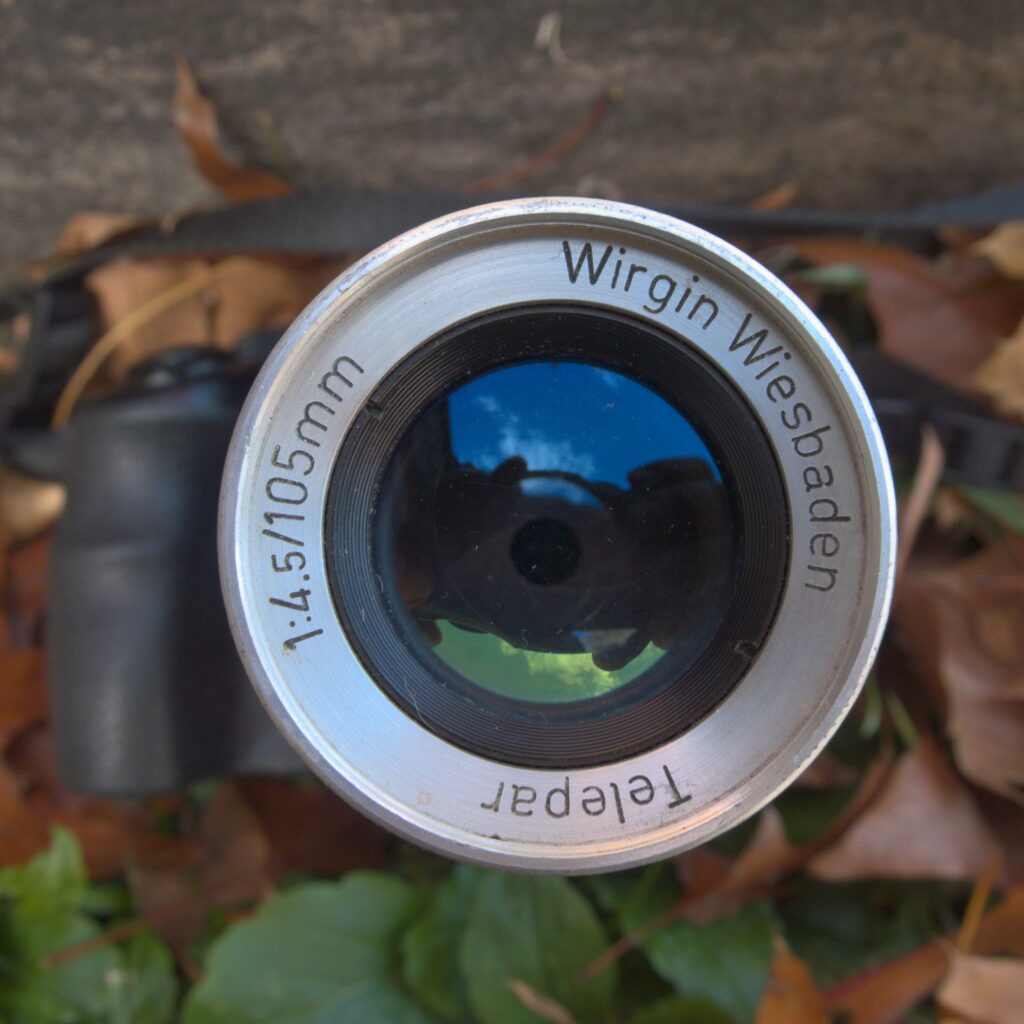
If Victor Frankenstein had a camera, it would probably be put together like this. The camera is a Sony Alpha 3000. The lens is German and more than seventy years old (probably; old Pa Pitt is not sure about its date). It’s a Wirgin Telepar 105mm lens, which makes it the full-frame equivalent of 157½mm on the Sony with its APS-C sensor.

Father Pitt picked the Sony because its image quality was said to be excellent (and it is), but also because its E-mount, with inexpensive adapters, could accept a wide variety of ancient lenses that he happens to have sitting around. The Telepar is a 42mm screwmount lens, and the number of lenses made for that mount is staggering. Father Pitt has half a dozen of them from the days when he used a Praktiflex and a Zenit.
Now, what is the point of using a lens like this when there are modern lenses that are better and more adaptable? Well, for one thing, every lens sees the world differently. You won’t get the same picture from this lens and from a modern lens at the equivalent focal length. You might get a better picture from this lens. You might get a worse picture. But you’ll definitely get a different picture.
Second, attaching a manual lens to a modern camera wrests control of the camera from the electronics. The camera doesn’t know there’s a lens at all: it has to be told to fire the shutter whether it sees a lens or not. The photographer has to set the aperture on the lens itself, and he has to focus by hand and by eyeball (and with the assistance of focus peaking, which he does not disdain).
Third, a prime lens—one that has only one focal length—makes one think about composition differently. Old Pa Pitt makes full use of zoom lenses when he has them. But that laziness comes at the price of some second-rate compositions. When the only way to change the composition is with one’s legs, one puts more thought into the composition.
Father Pitt spent an hour in the Union Dale Cemetery with this camera and lens, and he was pleased with the results. Here are a few of them:







The Telepar will get more use. When it is not in use, it will continue to live in the tube in which it came to Father Pitt: a tube labeled “CLOSTRIDIUM HEMOLYTICUM BACTERIN… For Use by Qualified Veterinarians.” It fits the lens perfectly.
Leave a Reply